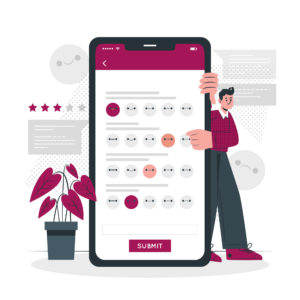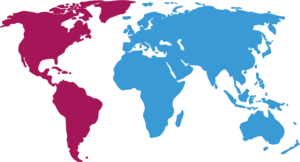What are the characteristics and distinguishing qualities of oral-preference communicators? When pursuing this question, we found that orality is much more than storytelling and the preference for oral communication over textuality. It’s also how people learn, think, and make sense of the world around them. It’s embedded in their worldview.
This page is to provide transparency and is more technical in nature.
Information we collect

The surveyor’s information is not public but just for our records and communication purposes.
The core of this survey comprises 30 statements, two for each of the 15 traits of orality we describe on GOMAP. The surveyor must go through each statement and move the slider to the position that best describes this people group. Some statements use “reverse coding” to ensure the surveyor carefully reads each statement.
The demographic information we collect is needed to combine surveys of the same people group and aggregate the score to give more accurate results. We use the Joshua Project API for the drop-down options for the country, people group, and language. The options can be manually added if your needed information is not showing.
Every survey is manually reviewed and approved before it is displayed on the People Groups page.

Computations we do
Resulting of the answers provided, an Orality Quotient (OQ) is generated that ranges from 0 for Very Low Orality Reliant to 100 for Very High Orality Reliant.
To account for the varying significance of the traits of orality for oral communication, some traits like narrative or the arts have more impact on the OQ than traits like identity or respect.
The OQ is mainly based on the 30 statements, but the demographic information can sway a survey by a maximum of 20% towards HOR or LOR. This is to account for general trends within a people group. For example, urban university students tend to be less orality reliant than rural farmers.
The surveyor’s relation to the people group impacts how surveys are weighted in relation to each other. The closer the surveyor is to the group, the more weight the survey will have. Likewise, a survey that is done as a group will have more weight.
Results we provide

The overall OQ is a good indicator of the people group’s orality reliance. To give more nuance to the results, each of the 15 traits of orality is clustered into groups of three. An OQ is then computed for each of the 5 clusters.
The recommendations displayed for each cluster come from a database with hundreds of tips based on research about contextualization, anthropology, social sciences, communication, and orality. The recommendations are pulled together depending on the orality reliance for each individual trait of orality of a given people group. The array of recommendations for each of the traits of orality has the range of Very HOR, HOR, LOR, and Very LOR.

Features we are working on
A filter and sort functionality for the surveys of any given people group. The aim is to provide even better recommendations that are updated depending on the filters used. One may, for example, only want to see the OQ of rural women of a people group.
The ability to select a specific survey and update the recommendations to reflect its OQ.
As time progresses and more surveys come in, older surveys will slowly lose weight compared to newer surveys to account for cultural and educational development.
A second survey, based on the OQ results, aims to make the general recommendations more specific and precise.
Provide more ways of accessing our data for integration in other projects (API) and access to information that can lead to further research, paper, and thesis writing.
Tight integration with the 5-module certification program of I-OS.

An interactive map with all surveyed people groups.
Interaction we value
Contact us for more information and to give us feedback.
We appreciate suggestions that can help us to improve GOMAP!
